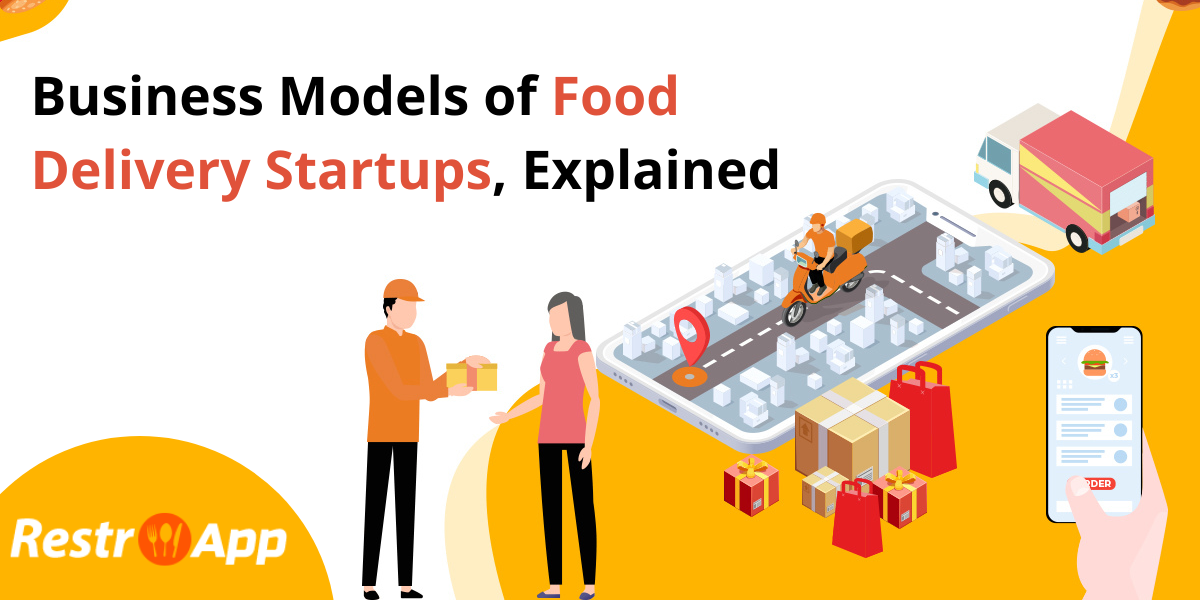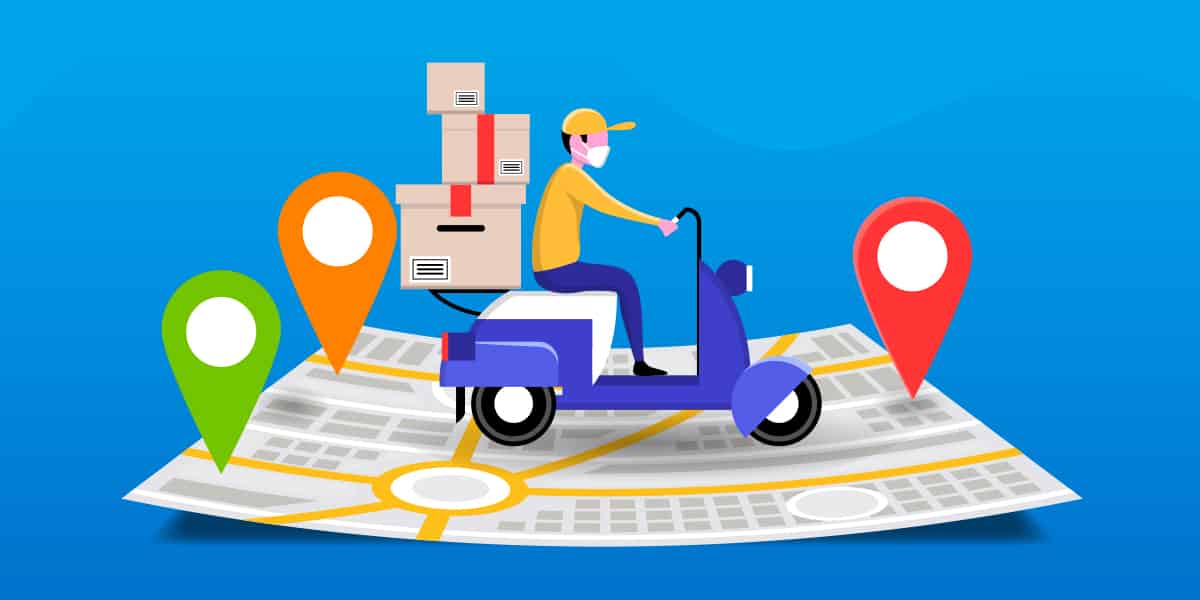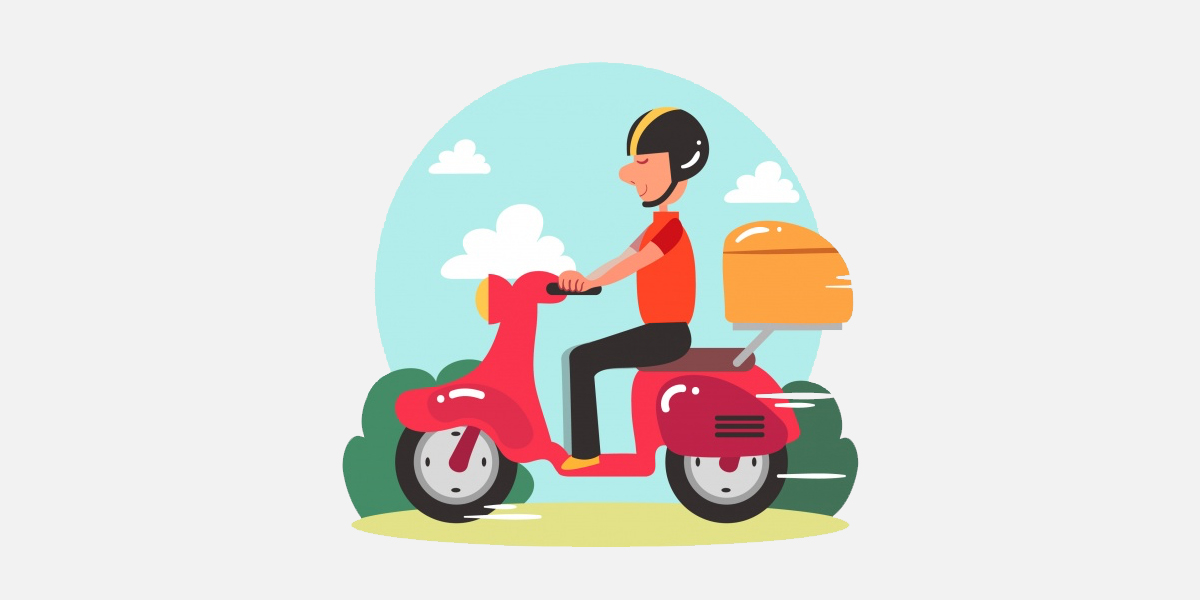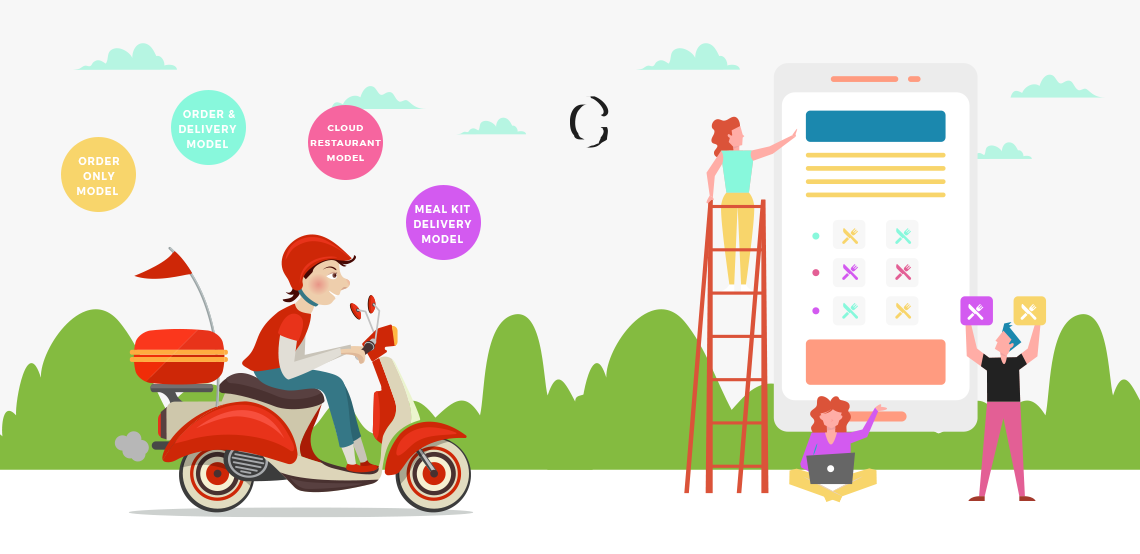
Food Delivery Businesses – The Current Scenario
The food delivery startups are all about delivering food with the utmost safety in 2020. Credit goes to the coronavirus pandemic, resulting in safer food delivery services. Besides, customers are looking for comfort and convenience as of now.
Top 3 Business Models of ‘Food Delivery Startups’

What is the best business model for the grocer delivery business? Everyone questions before stepping into the food delivery business? The utmost requirement of today’s business is comfort and convenience. So, that should be your primary motive – to deliver comfort along with food to the customers. Now, speaking of which business model you should choose, let’s dig the heels deeper to understand different food business models, and how each one of them works.
The on-demand food delivery business seems to be at a peak due to the COVID-19 crisis. People are panicky and afraid to step out of the home – hence they order food online. This sudden demand of customers, to get food at home, has amplified the ‘food delivery business.’ Besides, we all know that the food delivery business is a never-ending business on this planet. Till the existence of humans, this business is going to survive, with certain highs and lows, of course.
So, if you are a startup, or thinking to step into the world of the food delivery business, this is the right time to take your first step towards this successful business.
Business Models of Food Delivery Startups
How to deliver convenience to the customers? That’s the prime question right now. The customer is the king in any business, and specifically this one. They are craving convenience and comfort, currently.
Let’s learn what brings comfort to the people so that no matter which business model you choose, it delivers success to you.
Delivering ‘Convenience’ to Customers in Food Delivery Business
The food delivery market has these five chances to impress the customers and keep them hooked. Moreover, if you focus on these opportunities, the chances of delivering better services and quality deliveries are possible.
- Access – Customers don’t wish to wait anymore, if the services are not quick, they will probably shift to some other services. Alternatively, if you make it a comfy deal for your customers to buy food from your restaurant, they will stick to your business for longer. For instance, if your competitors are serving in 20 minutes, reduce your delivery time, and customers will start moving to your business. So, you have to research the market thoroughly to make it work for you.
- Payment – Nobody has the time to wait for the slow payment methods to work. Customers are looking for the easiest options to pay the money for the orders. Also, if you are relying on just one method, just add multiple options now. Your app and site must have multiple payment options, including credit card, debit card, net banking, and COD. Hence, keep different payment options in your app and website for the ‘payment convenience’ for your customers.
- Speed – Now, let’s suppose you are delivering super quick food deliveries to your customers. You are not rejecting any order, plus you are delivering food on time. Why would your customers leave your side, when your entire focus is on delivering everything on time? No, they won’t leave your side, and the chances of them turning into your loyal customers are much higher if you constantly keep delivering on time.
- Decision – How quick your customers are deciding to pick you over others? That’s how you count the success rate in the food delivery business. If the customers are choosing to order from you every time over others, of course, that’s going to impact your business and profits. Hence, you will have to be better at your deliveries, food quality, communication, and almost every other essential factor to win and sustain in the game.
- Re-Purchase – Does your website or app provide the option to repurchase? If yes, that’s a great deal for the customers. Allowing them to re-order the same order, or bookmarking their favorite orders enhances the chances of hooking the customers. Since it saves their time and effort, surely, they are going to love it.
So, that’s what grocery delivery startups need to invest cost, effort, and time in making it a convenient deal for the customers to order from your app or website. That’s the best way to keep your customers in 2020, and ahead.
Food Delivery Business – Business Models

Finally, let’s talk about different business models of the food delivery business. Here are some effective and dominant ‘food delivery business models’ prevailing today:
‘Order & Delivery’ Food Delivery Business Model
The first business model is order and delivery. So, how does this business model actually work? Well, it started with placing the order on the ‘food delivery app’ or website. An online menu of the restaurant is served to the customers online, using which they pick their favorite dish to order. A flat fee is charged from the patrons for every restaurant. When the order is received, it is forwarded to the closest couriers to the pick-up destination.
Now, coming to the delivery section – the courier agents log in to the accounts on the phones provided to them. This phone has a ‘delivery app’ installed, which helps delivery agents in tracking the destination and route easily. The delivery agent who is available to take the orders or is nearest to the order destination will pick up the order and deliver it to the customer.
Why & Why Not ‘Order & Delivery’ Food Delivery Model?
a) Downsides of Order & Delivery business model – This business model relies highly on how the delivery agent works. So, if the delivery agents are not trained properly, that will surely show up on the business. And, that’s not all, besides training these agents, they will also have to understand how the equipment works, how the shits are planned, and much more. However, these marketplaces are not as easy to handle unlike those based purely on the software.
b) Benefits of Order & Delivery Business Model – The startups might have to struggle in the beginning. There are a few strong food delivery businesses already relying on this business model, leaving little space for new entrants to enter. However, you always have to start at some point, reach that maturity level in your local area, where the customer just relies on you for getting some unique delicacies and cuisines. The primary benefit of this food delivery business model is to charge a certain amount as commission to get the food delivered to customers. Businesses or startups that are built on this business model needs to hire delivery agents to get the deliveries done – right from the restaurant to the customers.
‘Fully Integrated’ Food Delivery Business Model
The next category is the ‘fully integrated’ food delivery business model. So, in this business, delivery startups develop their own food delivery app, using which the customers have the option to order some limited meals. Their business model caters to some specific locations, usually delivering different menus every day.
In this food delivery business model, the kitchen opens, receives orders for some specific hours, and delivers it later at the specified time of the day. They are opened at a particular time about which a message is delivered to the people. After that, they start ordering from the given menu along with the time, when they wish to receive their orders. One of the food deliveries companies that use this model is ‘Swiggy.’
This business model needs utmost care, as there are higher chances of food wastage in this business model. Since the food is delivered from kitchens directly to the people, it is important to cook meals only that you believe will be ordered by the customers. But the best part is that the customers can pre-place the orders, which doesn’t let these businesses waste food.
Usually, the food is prepared in advance, then the orders are received. Deliveries are done within the specified time, and chefs keep on preparing the food as per the orders and demands. Once the food is ready as per the order, the nearest delivery agent is hired to deliver the order to the customers. The driver utilizes the ‘delivery app’ for supplying the orders to the customers.
Why & Why Not ‘Fully Integrated’ Food Delivery Model?

a) Downsides of a Fully Integrated business model – The major challenge or the downside of a fully integrated food delivery business model is the high operational cost. Many meal delivery startups have to end the food delivery business right at the start, just because the operational costs are high. However, that can be fixed with a better user experience and high-quality food delivery services.
b) Benefits of Fully Integrated Business Model – One of the main benefits of a fully integrated food delivery business model is that there is barely any interference from third-parties. If you are able to cope up with the operational costs, in the beginning, there are higher chances of attaining success in the business and earn higher profits.
Related Post: How Startups can Gain Edge with an Online Food Ordering System?
‘Order Only’ Food Delivery Business Model
The ‘order only’ food delivery business model is followed by numerous food delivery businesses, including JustEat and GrubHub. They act as pure tools for independent restaurant ordering. The business owners focus on attaining new customers via both the food delivery app and the website. Their main selling point is to bring in tons of new orders, replacing the phone orders with a website and app ordering system. Their digital mediums are highly integrated with the workflow of the kitchens.
So, for order allocation, the customer places the order on the site, the restaurant receives the order details, and confirms with the customer that the order has been received. It is done generally via an email or phone call. Once the order is prepared, the order is taken by their delivery agents to the specified location within the given time.
The deliveries at such a food delivery business model are done via two main methods. One, the delivery driver is employed by the restaurant to deliver the order. The other method to deploy orders is where a delivery driver is hired by a restaurant delivery service. Finally, the order reaches the customers.
Why & Why Not ‘Order Only’ Food Delivery Model?
a) Downsides of Order Only business model – There is a high reliance on the restaurant’s own delivery agents, which means that the variety in price and cuisines are limited. Besides, they don’t have any option to control or optimize the quality or speed of the deliveries. Generally, the food that is ordered via this business model is pizzas, burgers, and Chinese food. No control over the speed and quality of services and food is a big drawback in this business model.
b) Benefits of Order Only Business Model – One of the best advantages of this food delivery business model is that there is no involvement of food touching – as they are neither cooking nor delivering it to the customers. They are just taking orders and informing the collaborated restaurants about the same. That’s why a small amount as the commission is charged just to bring in new customers. This type of business model is seen to grow and earn moderately in the long run.
The Takeaway
The on-demand food delivery business models for startups are available in a variety. However, you will have to select the best business models based on your requirements and budget. Pick the food delivery business model wisely, and focus on delivering convenience, safety, and quality deliveries to the customers. That’s the key to sustain in the food delivery business in 2020, and even after that.